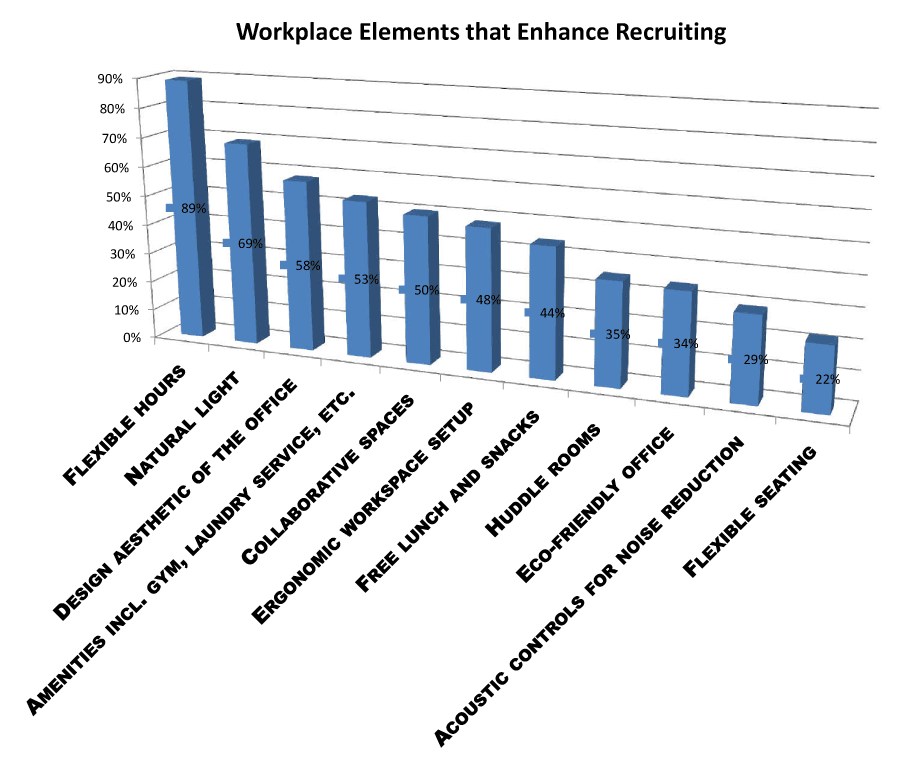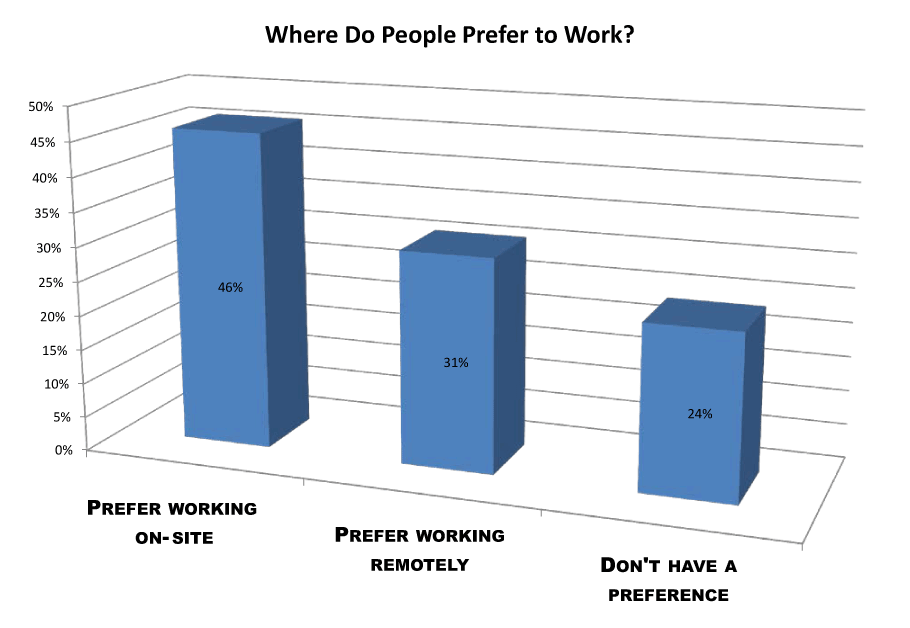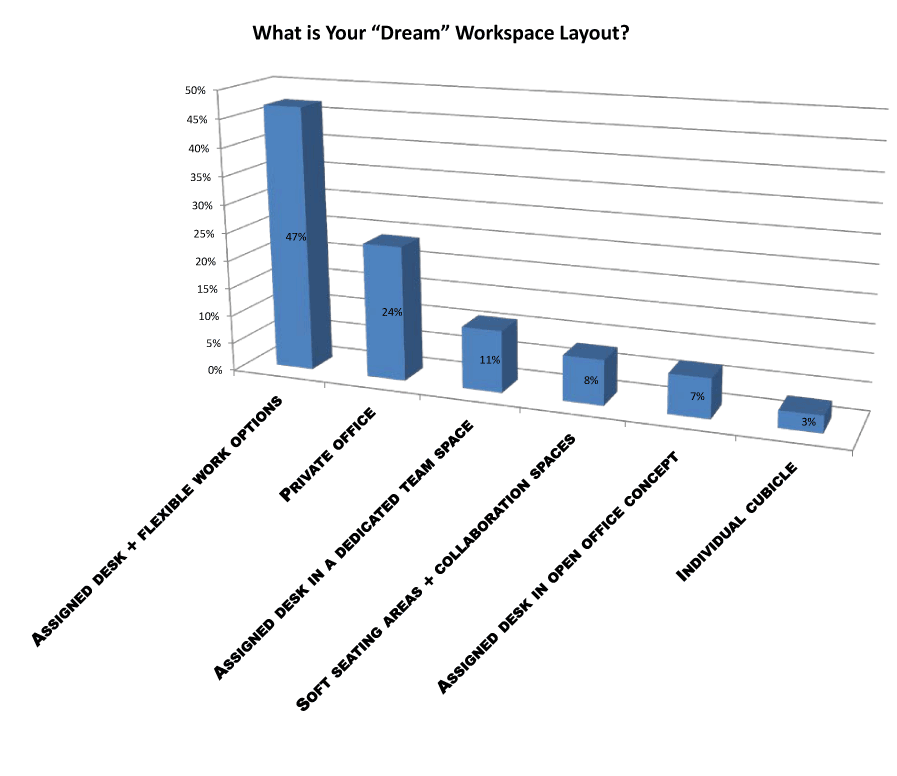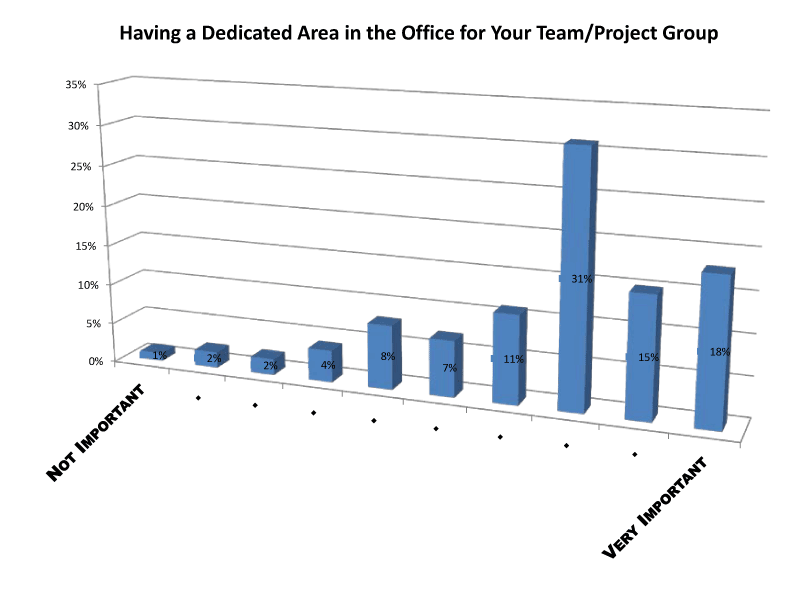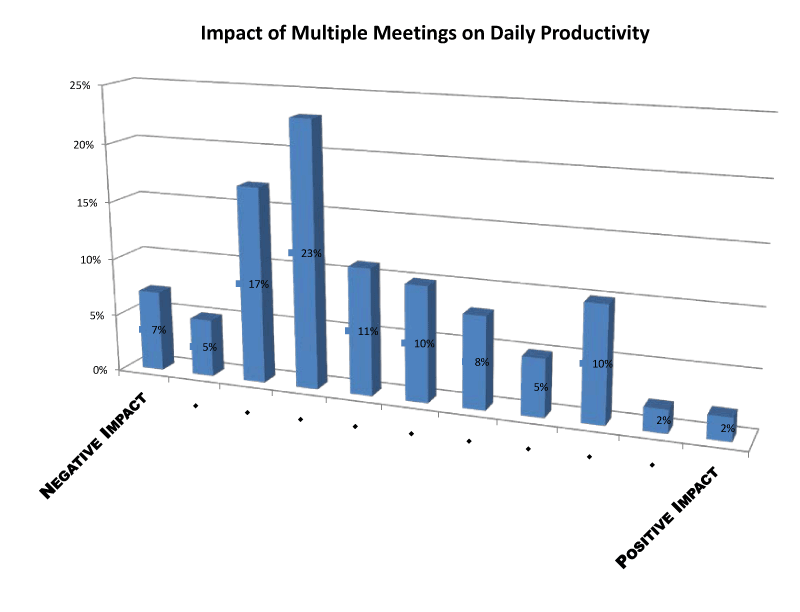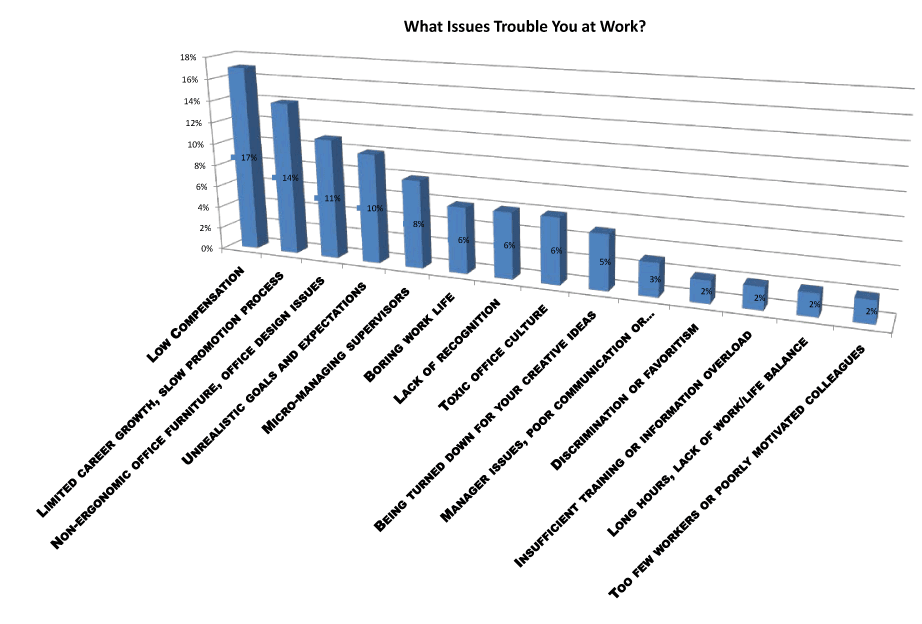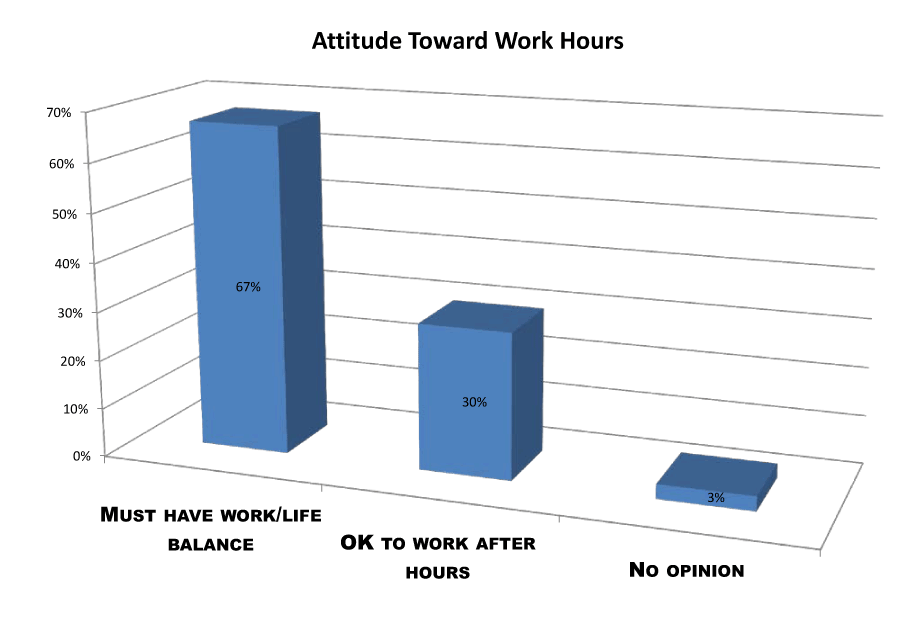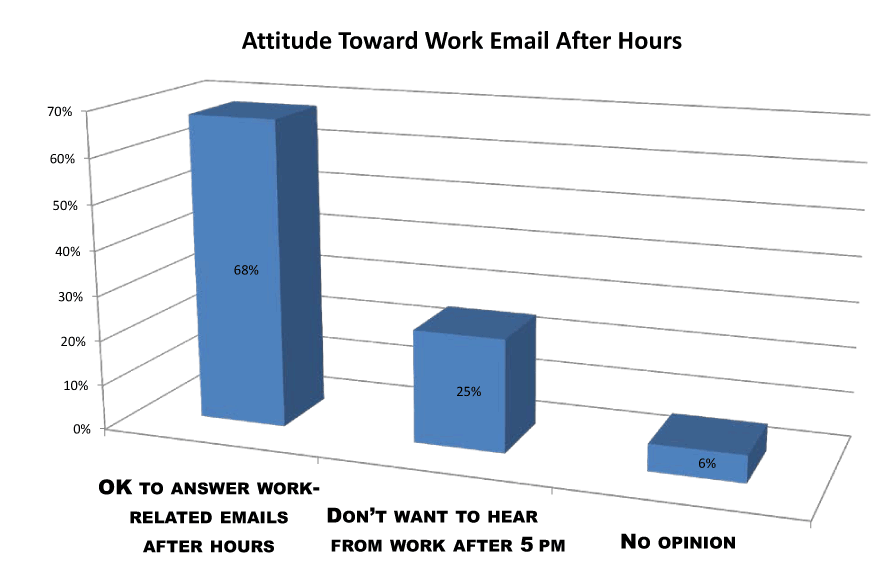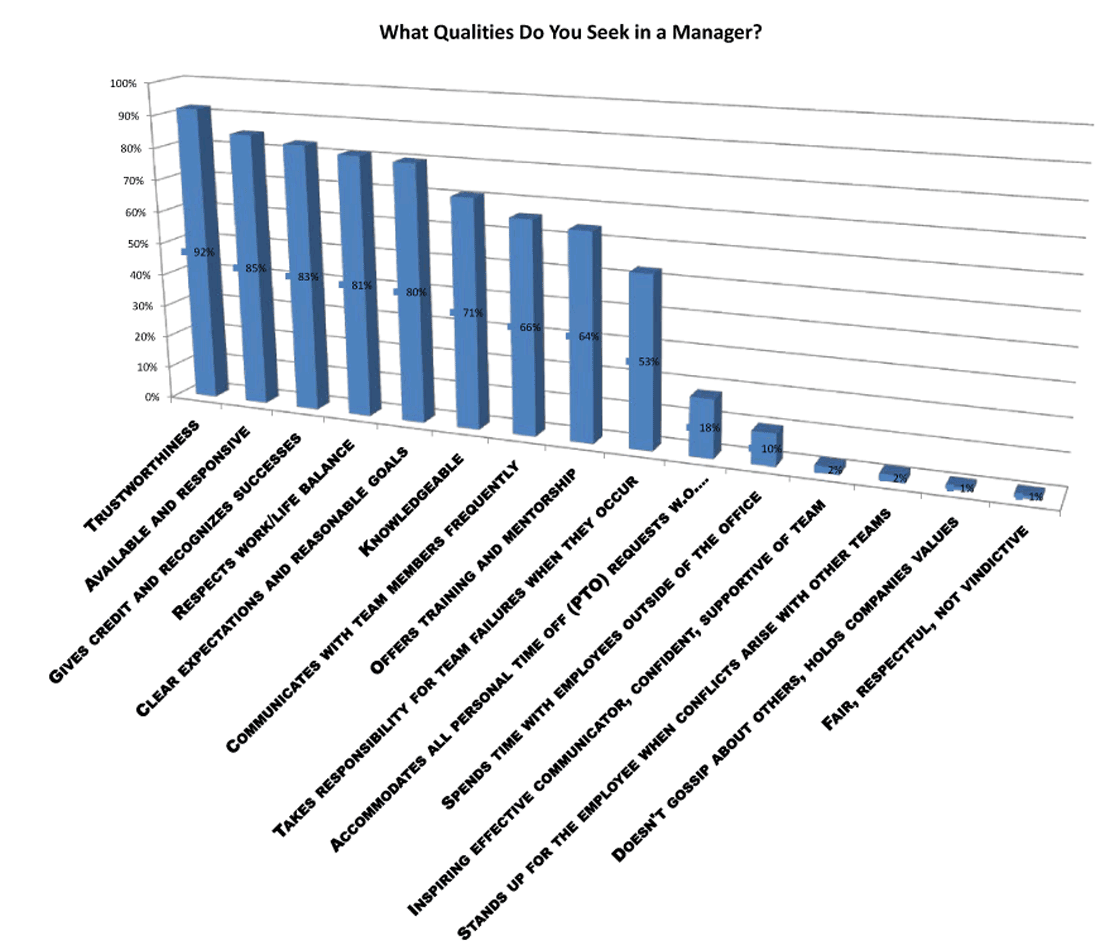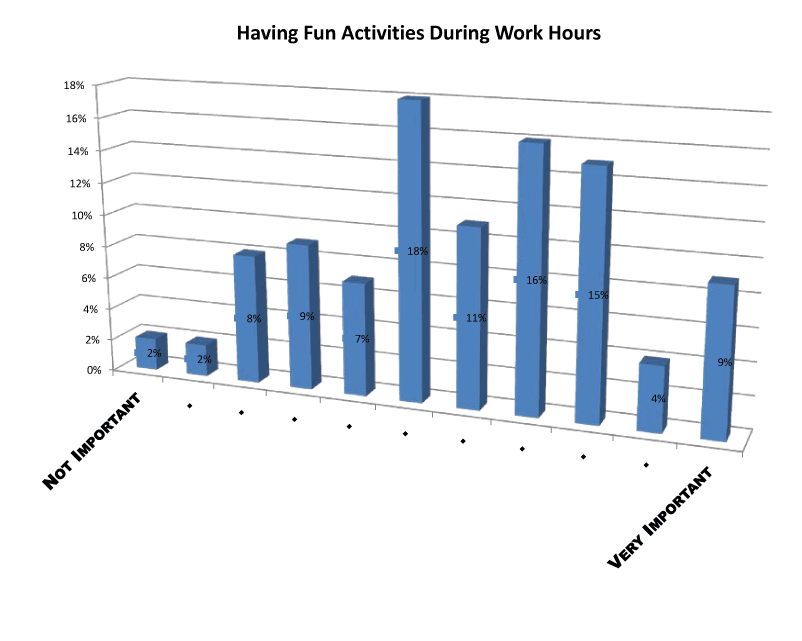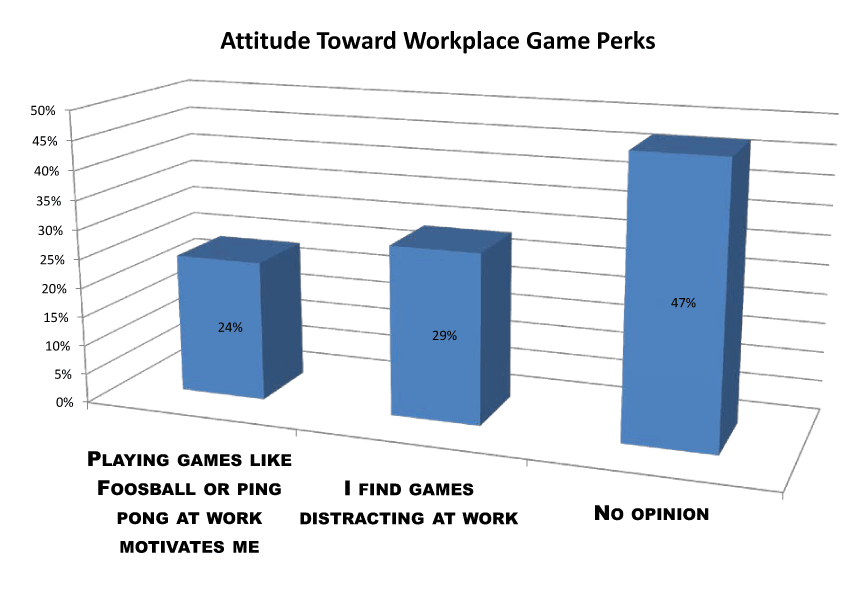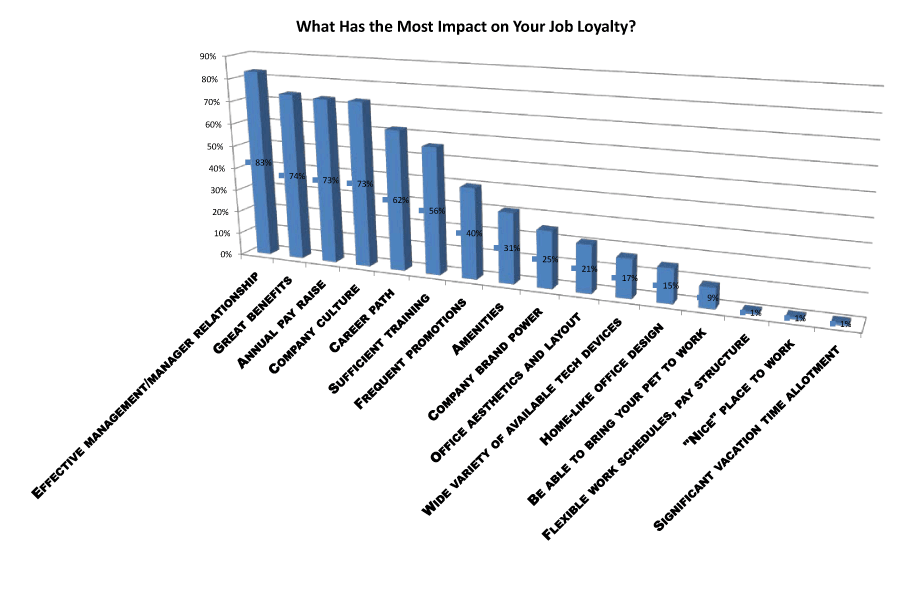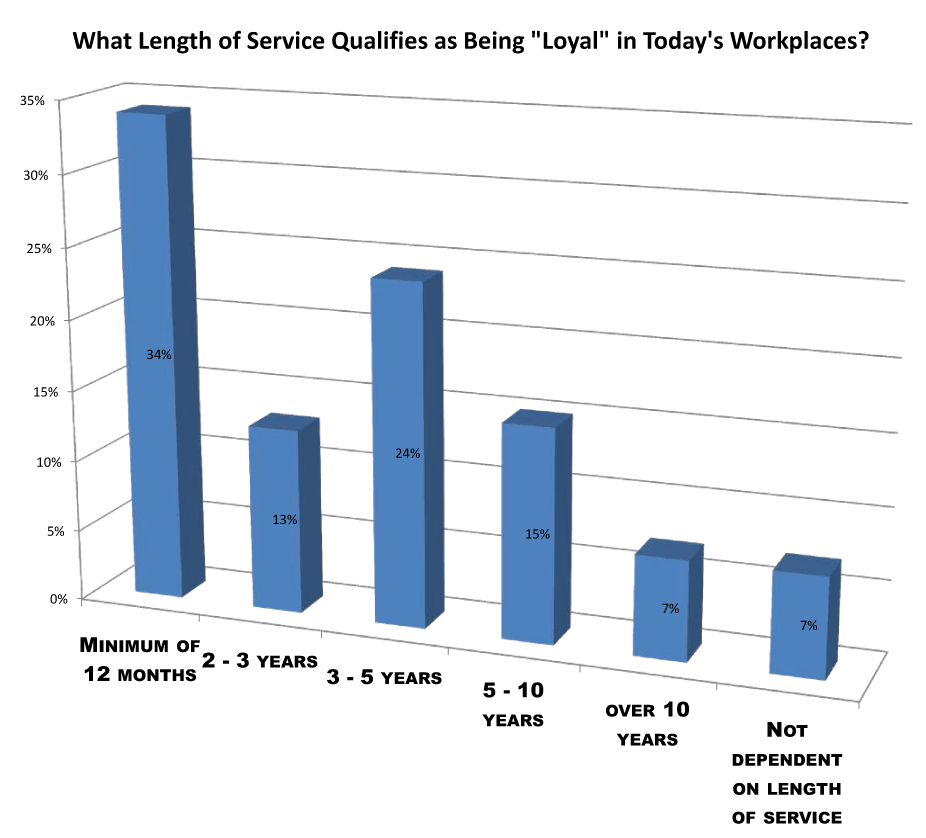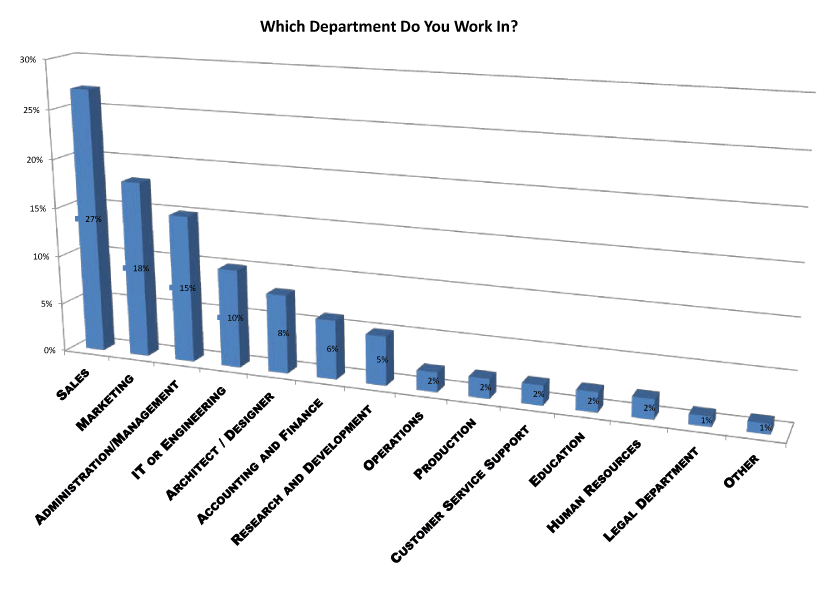During a time when the nature of work is changing rapidly, it’s more important than ever to keep on top of the latest office workplace trends. That’s why we’re pleased to announce the results of Formaspace Office’s first annual industry-wide survey of employee satisfaction at work, which takes a look at worker attitudes toward maintaining a good work/life balance, ways to increase office productivity, as well as how to attract new hires while motivating and retaining your existing employees.
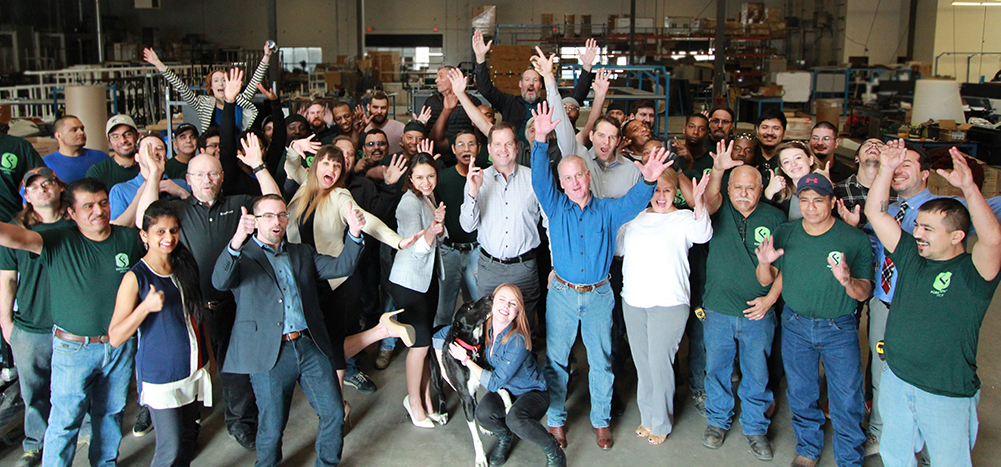
The idea for an annual industry-wide survey of employee satisfaction at work came to us thanks to a conversation we had with a customer who was visiting our Formaspace Office booth at the 2017 NeoCon contract furniture exhibition in Chicago last year. Given the rapidly changing nature of today’s office work, which has been fueled by the revolution in mobile communication devices and flexible office layouts, we felt it would be useful to track the evolving attitudes of office workers across the spectrum of different industries and different generations.
We reached out to a select group of Formaspace customers and industry colleagues to invite them participates in the survey, which was conducted online over a 30-day period in February and March. We were pleased to get participation from a very wide spectrum of industries; over 25 different industry sectors are represented, with job functions spanning more than a dozen different office departments. (For details on which industries and department functions were represented, see the appendix at the end of this article.)
We’d like to extend a big thank you to all of you who participated. We’d also like to announce that we have one lucky winner, T. Powers, representing the late millennial generation, who will be receiving a $100 Amazon gift card as part of our lucky draw for survey participants.
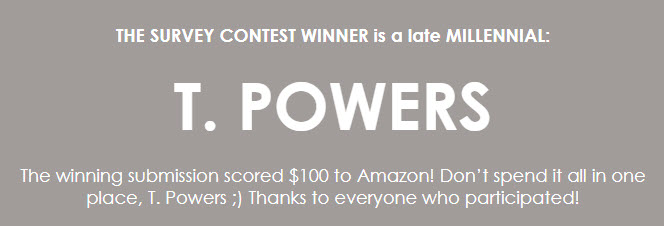
Now let’s jump into the results of our First Annual Industry-Wide Work-Like Awareness Survey by Formaspace.
1. Making a Good First Impression: What do Job Applicants Look for in a New Company
Attracting new talent is a major challenge for many companies today, especially in high demand sectors, such as programming and other tech fields which require STEM skills. Ongoing Baby Boomer retirements are only making the problem worse.
So we wanted to know which benefits or amenities resonated with our survey respondents when they were asked to identify elements that would attract their attention when searching for a new position.
Flexible hours at work was the top response.
Natural lighting and the design aesthetic of the office were the second and third ranked responses. The survey also indicated that collaborative spaces, huddle rooms, and ergonomically-designed workspaces were rated as important by many. Amenities, such as on-site gyms, laundry services, as well as free lunches or snacks ranked highly as well.
What workplace elements make a company for attractive when you are searching for a new job?
* Generational Insight: Offering Flexible Hours was the top response across all generations of respondents.
2. Where Do Workers Prefer to Work? At the Office or at Home? In Collaborative Spaces or Private Offices?
After many years of companies moving toward allowing their employees to work from remote locations, there are signs that this trend is either slowing down or, in some cases, reversing, as evidenced by policy changes by large employers, such as IBM.
We wanted to find out what our respondents thought about this issue.
As you can see in the Generational Insight note below the chart, a majority of Millennials prefer to work in the office rather than off-site.
Do you prefer to work in the office or at a remote location, such as at home?
* Generational Insight: 58% of Millennials said they preferred to work on-site, while 53% of Gen Xers responded that they want to work remotely. This supports our other observations that Millennials want to work together in teams rather than be independent.
Here at Formaspace Office, many of our customers in the high-tech startup arena have commissioned us to build furniture installations for open office layouts that feature a combination of individual desks, group worktables, conferencing areas, communal break rooms, and cafeterias, as well as impromptu lounge seating areas.
We wanted to learn about the workspace preferences among our industry-wide respondents.
Which type of office layout is your ideal workspace?
* Survey Insight: Nearly 50% of all respondents wanted to work in an assigned desk space with additional options to work flexibly within the office.
3. Which Workplace Elements do Workers Believe Will Make Them More Productive in the Office? What about Support for Electronic Devices and Providing Dedicated Team Work Areas?
To learn more about attitudes toward productivity in the office, we asked our survey participants to identify all of the workplace elements they felt would make them more productive at their job.
The responses were generally similar to those from the question we asked about elements you would look for if you were applying for a position at a new company.
Among the differences, having an ergonomic workspace setup is ranked higher (65% vs. 48%) here, e.g. when people are asked about their current office productivity needs, versus the question about what would be attractive about working at a new company. (This is possibly due to people being more aware of what their day-to-day issues are at their current workplace.)
Which workplace elements would make you more productive in the office?
* Generational Insight: There was no meaningful difference between generations in response to the question on flexible hours; it was the top response among all generations.
How important is it for your daily work routine to be able to switch easily between mobile devices, personal computers, and collaboration area display monitors?
We wanted to know more about the value to workers of investing in mobile device technology that allows you to switch seamlessly between different devices throughout the day. As shown in the generational insight note below, Millennials are most likely to find this to be important.
* Generational Insight: As a group, the Millennial generation expressed the greatest preference for having easily accessible mobile electronics in the office. This is not surprising considering they are Digital Natives.
How important is it to have a dedicated area in the office for your team/project group to meet and work together?
Architects, space planners, and designers need to know how important it is to allocate floor space for project teams to collaborate. According to our survey, most respondents found these collaborative work areas important to very important.
4. Does Attending Multiple Meetings During the Day Impact Productivity?
Anecdotal evidence had led us to believe that the issue of having multiple meetings in a day was a contentious one, with many feeling that having too many meetings crimps on productivity, while others feel that open communication leads to productivity gains.
In our survey, the responses were fairly evenly distributed with a greater number of people indicating they felt that having multiple meetings mildly negative to negative impact on their daily productivity.
Do multiple meetings throughout the day make you less productive in the office?
5. What Are the Main Issues Aggravating Workers and/or Causing Low Employee Morale?
Since this survey is confidential, participants were fairly open in expressing which issues are on their minds.
Low compensation was the top issue, followed by slow promotion processes and limited career growth opportunities.
Interestingly, for us, as manufacturers of ergonomic furniture, we take a great interest that the lack of ergonomic office furniture and other office design issues was the third-ranked issue facing our survey participants.
What issues are causing trouble for you at work?
6. How Do Employees View Working After Office Hours Versus the Need to Maintain a Life/Work Balance?
We wanted to know how employees felt about achieving a balance between life outside of work and their career.
More than two-thirds of our respondents said that a good work/life balance was important to them.
Attitude toward achieving a good work/life balance
* Survey Insight: the vast majority of respondents (67%) express a desire to maintain a work/life balance
However, we wanted to test this assumption by asking a follow-up question concerning the attitude toward answering work emails outside of office hours. The result was the same: over two-thirds of the respondents felt that responding to email after office hours was okay.
We’ll want to explore this further with additional questions in a future survey to understand more about this.
Attitude toward answering work email after office hours
* Survey Insight: Despite the majority of respondents wanting to maintain a life/work balance, the same percentage (67%) felt comfortable with answering emails after work hours.
7. What are the Ideal Characteristics and Qualities of a Manager from the Employee Point of View?
An employee’s relationship with their manager can make or break their relationship with the company they work for.
When describing the ideal characteristics and qualities of a manager, Trustworthiness, Availability and Responsiveness, and the Ability to give Credit and Recognize Employees Successes were the top three responses in our survey.
What qualities do you seek in a manager?
8. Are Fun Activities, such as Games, Held during the Office Workday an Important Perk for Employees?
High visibility startups in Silicon Valley helped kick the trend off toward having fun activities and games during work hours.
We wanted to find out from our survey participants how important this was to them at their office.
The results were mixed with most responses clustered around what could be termed mildly important.
How important is it to have fun activities in the office during work hours?
What is your view of having “perks,” such as games, in the office?
We asked a follow-up question about having perks, such as games in the office.
Nearly half of the respondents had no opinion. But among those who did, the verdict was fairly evenly split, with a slight majority maintaining that games in the office were distracting.
9. Worker Views on their Individual Career Goals and Motivating Factors for Employee Retention, such as Career Advancement and Compensation Issues
Other research has shown that employees will change jobs more often than in the past, so we wanted to know a little bit more about what motivates workers, starting with learning about their individual career goals.
Interestingly, the top response was to work with good colleagues and avoid stress in their lives. This was a very surprising result.
How would you describe your career goal?
Next, we asked respondents to indicate all of the elements that they felt would influence their job loyalty.
The insights here are useful for HR departments looking to implement job retention programs.
The relationship with their manager or management team was the top result, followed by benefits packages and annual pay raises.
Which elements impact your job loyalty?
* Survey Insight: More than 70% of all respondents said that annual pay raises and good benefits packages affect job loyalty. This was only exceeded by the impact of effective management and relationship they have with their manager.
As we mentioned above, other research sources indicate that people are moving between jobs more often throughout their career than previously. We wanted to see if this was reflected in the notion of loyalty.
It’s our impression that the top response, e.g. you can be considered a loyal employee with as little as 12 months of service, combined with the last response that 7% of this people felt that loyalty is not dependent on length of service at all, constitutes a major shift in our attitudes toward employee loyalty.
In your view, what length of service constitutes workplace loyalty?
* Survey Insight: The majority of respondents (34%) felt that working for an employer for at least one year was a sufficient indication of loyalty. 3-5 years was the second largest response, at 24%.
Work with Formaspace for Effective Office Productivity Solutions
Here at Formaspace, we’re dedicated to finding ways to make your office more attractive, functional, and efficient.
We’re ready to share our expertise as a leading manufacturer of customizable and fully bespoke office furniture solutions — all built to order at our factory headquarters here in Austin, Texas.
You know the names of some of our famous customers, including Capital One, Twitter, and Google.
Talk to one of our friendly Formaspace Design Consultants today to learn how we can help you update or build an office environment that will help attract, motivate, and inspire your employees.
Appendix A: How the Formaspace Industry-Wide Survey of Employee Satisfaction at Work Was Conducted
The following chart of participants’ individual departmental roles shows there was a fairly broad spectrum of survey respondents.
The following table of industry sectors represented indicates there was a fairly broad spectrum of survey respondents.
| What is the Industry Sector of Your Employer? | Percentage |
| Manufacturing | 19% |
| Wholesale or Retail | 11% |
| Software | 8% |
| College, University, and Adult Education | 5% |
| Construction | 5% |
| Finance and Insurance | 5% |
| Health Care and Social Assistance | 5% |
| Information Services and Data Processing | 5% |
| Marketing, Communication, Public Relations | 4% |
| Commercial Contract Furniture and Office Products | 3% |
| Scientific or Technical Products or Services | 3% |
| Architecture & Design | 2% |
| Arts, Entertainment, and Recreation | 2% |
| Computer and Electronics Manufacturing | 2% |
| Government and Public Administration | 2% |
| Sales | 2% |
| Hospitality, Hotel and Food Services | 2% |
| Recruiting and Human Resources | 2% |
| Telecommunications and Utilities | 2% |
| Transportation and Warehousing | 2% |
| Aesthetic and Beauty Industry | 1% |
| Military | 1% |
| Mining | 1% |
| Publishing or Broadcasting | 1% |
| Real Estate, Rental, and Leasing | 1% |
| Small-medium businesses | 1% |
